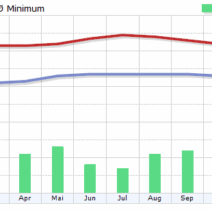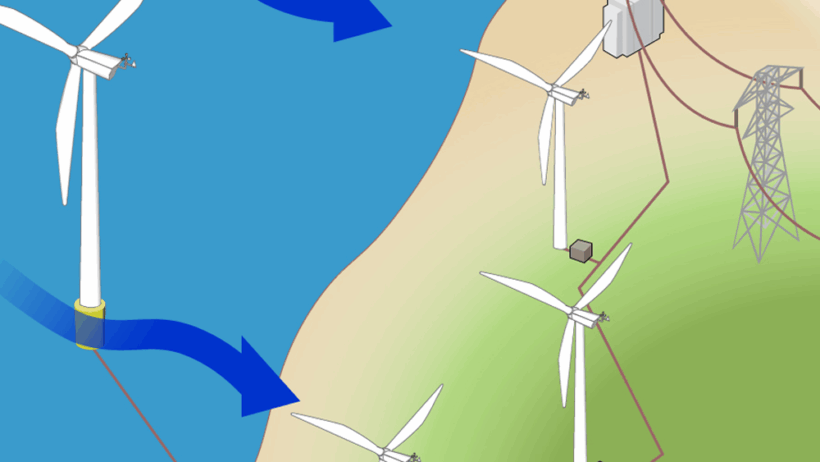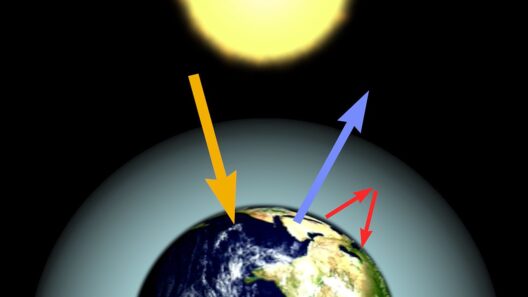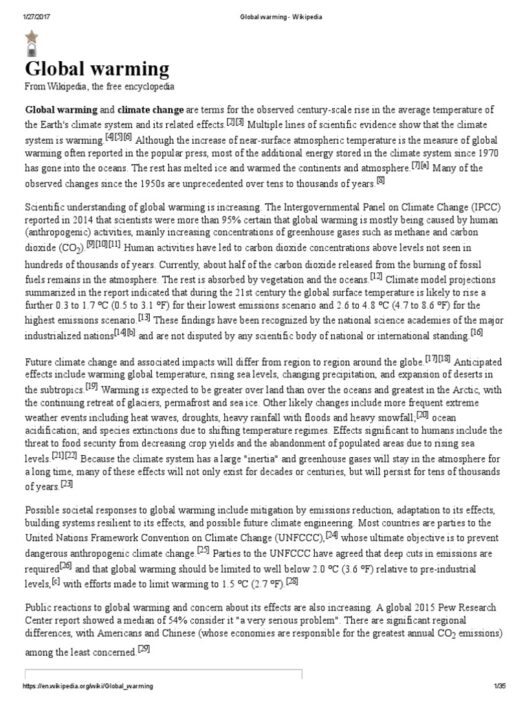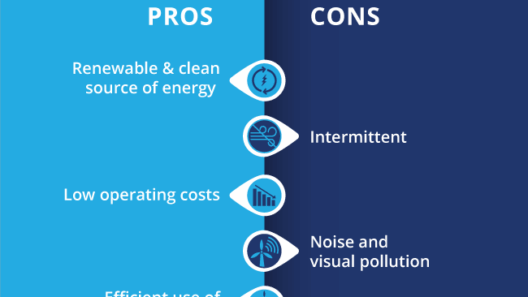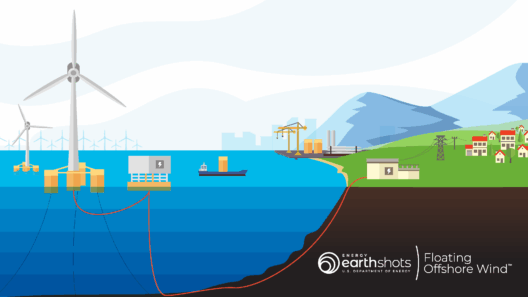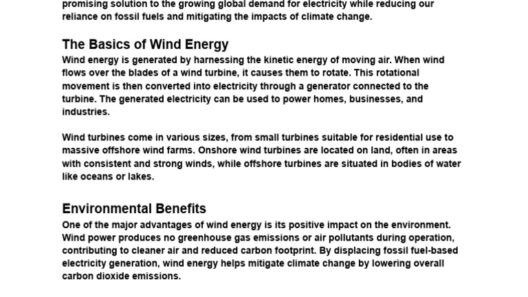Wind energy has emerged as a pivotal player in the global quest for sustainable power. The inexhaustible nature of wind, coupled with advanced technology, has transformed an age-old concept into a modern marvel of energy production. Understanding how wind energy works is essential for grasping its potential and addressing common concerns among consumers and stakeholders. This article endeavors to uncover the intricate mechanisms behind wind power generation, illustrating its advantages, functionality, and significance in the energy landscape.
Wind energy harnesses the kinetic energy of moving air and converts it into electricity through a series of well-orchestrated steps. This process begins with the design of wind turbines, which are the heart of wind energy production. Typically, these colossal structures consist of three primary components: the rotor blades, the nacelle, and the tower. Each part is essential for the turbine’s performance and efficiency.
Rotor blades, with their unique aerodynamic shapes, capture wind currents. As wind blows, the blades rotate, driven by the force of the wind against their surfaces. This rotation transforms the kinetic energy of the moving air into mechanical energy. But this is just the beginning of a sophisticated energy transformation.
The nacelle, situated atop the tower, houses critical machinery that converts this mechanical energy into electricity. Inside the nacelle, a gearbox increases the rotor’s rotational speed, making it suitable for the generator. The generator, using electromagnetic induction, transforms this mechanical energy into electrical energy. Subsequently, this electricity is transmitted down the tower through cables to a transformer, which ensures compatibility with the electrical grid.
Wind turbines are strategically positioned in wind farms, often located on open plains, hilltops, or offshore, where consistent wind patterns are prevalent. These locations are chosen based on thorough meteorological studies to maximize energy capture. Additionally, advanced technology allows for the monitoring of wind speed and direction, enabling turbines to adjust their orientation for optimal performance—a process known as active yaw control.
One of the paramount concerns about wind energy is intermittency. The wind does not blow consistently, which raises questions about reliability. However, advancements in energy storage systems and grid management are mitigating these issues. By storing excess energy generated during peak wind conditions in batteries or other storage systems, the electricity can be released even when the wind is calm. Furthermore, diversifying energy sources within the grid enhances resilience, ensuring that wind energy can complement other renewable sources like solar and hydroelectric power.
Moreover, it’s crucial to address environmental implications. Wind energy is often touted as clean and renewable, contributing significantly to the reduction of greenhouse gas emissions. Unlike fossil fuels, wind energy does not produce air pollutants, making it a viable alternative for combating climate change. However, the manufacturing, installation, and decommissioning of wind turbines do have environmental footprints, necessitating responsible sourcing and lifecycle assessments. Additionally, concerns about impacts on bird and bat populations have sparked research into mitigating strategies, such as turbine design modifications and strategic siting.
Another common apprehension is the impact of wind turbines on local communities. Despite the skepticism surrounding noise, visual intrusion, and land use, many studies have suggested that these concerns can be effectively managed. Proper planning and community involvement in the development process foster acceptance and support for wind projects. Moreover, the economic benefits—job creation, energy independence, and local tax revenues—often outweigh the perceived drawbacks.
As we delve deeper into the operational facets of wind turbines, it’s pertinent to acknowledge the technological advancements that elevate their efficiency. Modern turbines are equipped with sophisticated sensors and computer algorithms that optimize performance, enhancing their capacity factor—the ratio of actual output to potential output. These innovations facilitate better energy capture and reduced wear from environmental stressors, promoting longevity and cost-effectiveness.
The role of wind energy in the transition towards a sustainable future cannot be overstated. As nations scramble to meet ambitious climate targets, wind power stands out as a viable alternative to fossil fuels. Governments and private sectors are increasing investments in wind infrastructure, recognizing its potential to revolutionize energy systems. Economic incentives, such as tax credits and subsidies, are also crucial in stimulating growth within this sector.
In conclusion, understanding how wind energy works is foundational to grasping its transformative potential in the global energy matrix. Wind turbines function through a sophisticated interplay of mechanical and electrical engineering, converting the natural, renewable resource of wind into clean, usable energy. While challenges exist—intermittency, environmental concerns, and social acceptance—advancements in technology and community engagement provide pathways to address these issues. By embracing wind energy, we can not only meet today’s energy demands but also cultivate a sustainable and resilient future for generations to come.
